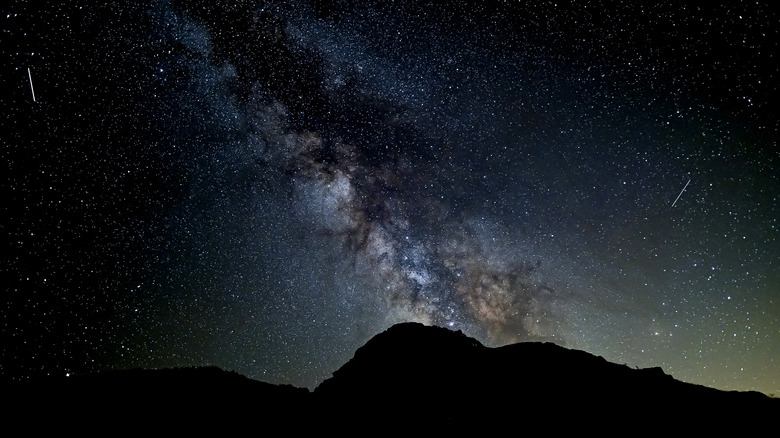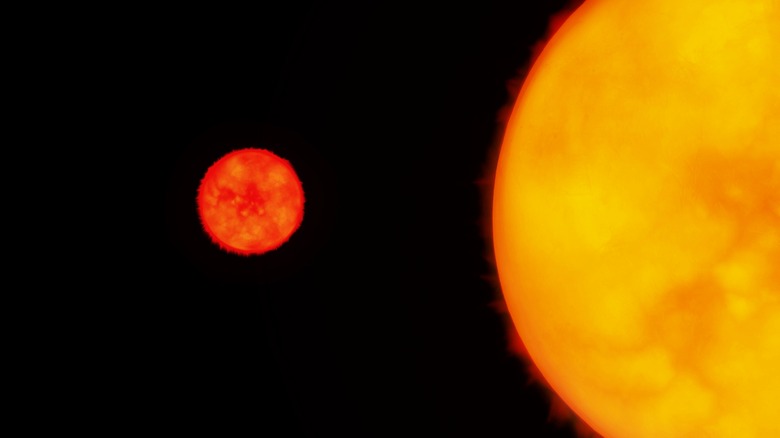Why You Won't Be Able To See Stars In The Future
If you live in a crowded city, you're probably used to looking up at a night sky full of nothing but blackness or, at best, a handful of stars. Light pollution has robbed many of us of the beautiful nighttime views our ancestors once beheld. Sure, beautiful starry views do still exist in some darker areas of the world. But, for most of us, seeing the night sky in its full splendor is a rare experience.
Well, in the future, the sky will be a dark, starless void, and it has nothing to do with light pollution. Luckily, we're talking about the far future here. Like, billions of years from now. There are a few main reasons for this trend toward darkness.
First, as you may have heard, the universe is rapidly expanding, and that expansion is actually speeding up. As West Texas A&M University explained, this expansion means that other galaxies are getting farther and farther from our Milky Way. In fact, every so often, a galaxy will become so distant that we can no longer see it — even with our best telescopes. Given enough time, humanity's telescopes will only be able to detect stars within the Milky Way and the nearest galaxies; all other galaxies will have receded from view entirely.
But this doesn't really apply to individual stargazers. As EarthSky pointed out, human eyes are only strong enough to see stars within the Milky Way anyway. But, one day, even those stars will fade out.
Brighter stars die out and only dim red dwarfs remain
As you also probably know, stars have a life cycle. They're born, they live, and then they die. Per ScienceAlert, recent research suggests that our own sun will turn into a red giant in about 5 billion years and die out completely after roughly 5 billion more.
But let's assume humanity still exists by then and manages to find another habitable planet (or a thousand of them). If we make it that far, stargazing is going to be a lot less exciting. One by one, each visible star in the night sky is going to die out. "That's alright," you may think. "New ones will be born to take their place, right?" Well, not necessarily.
As Wired reported, one comprehensive study estimated that 95% of all the stars that will ever exist in the universe have already been born. Star formation was at its peak around 11 billion years ago and has slowed significantly in the billions of years since.
Plus, the biggest, brightest stars in the sky will die out the fastest. As Phys wrote, smaller stars have much longer lifespans than larger ones. Tiny "red dwarfs" have the longest lifespans; some can live for trillions of years. But red dwarfs are too dim to be seen with the naked eye. So, if our descendants did survive long enough to inhabit a universe illuminated only by red dwarfs, they'd gaze up at the night sky and see... nothing.

